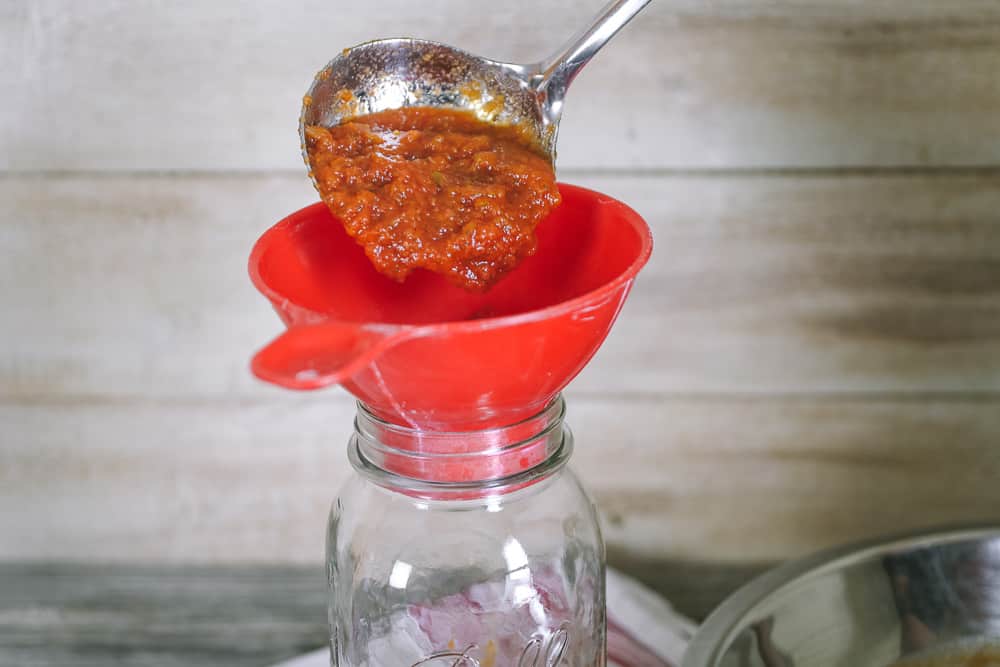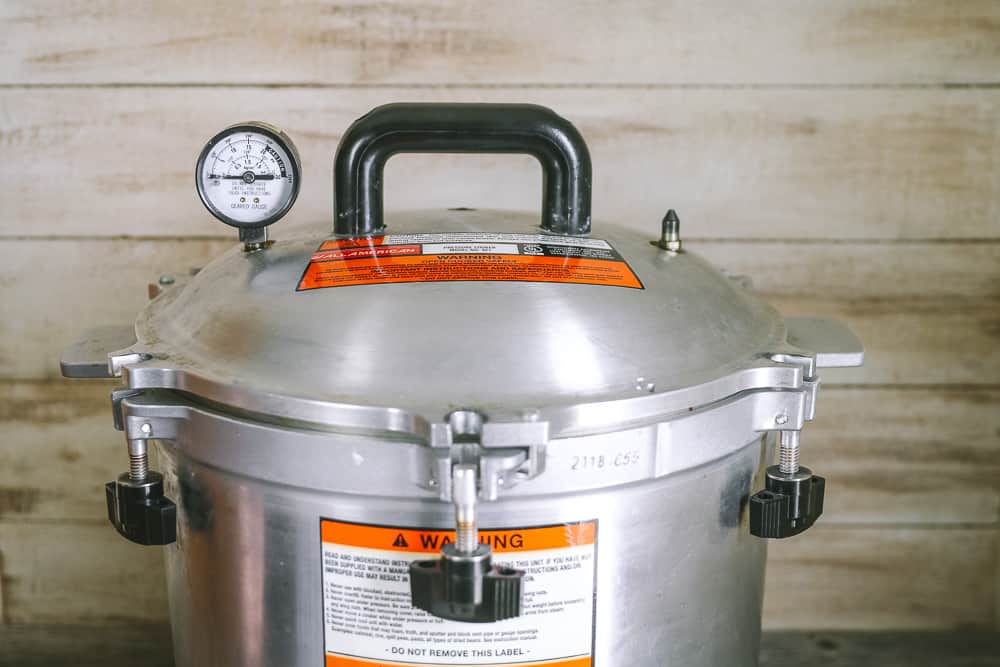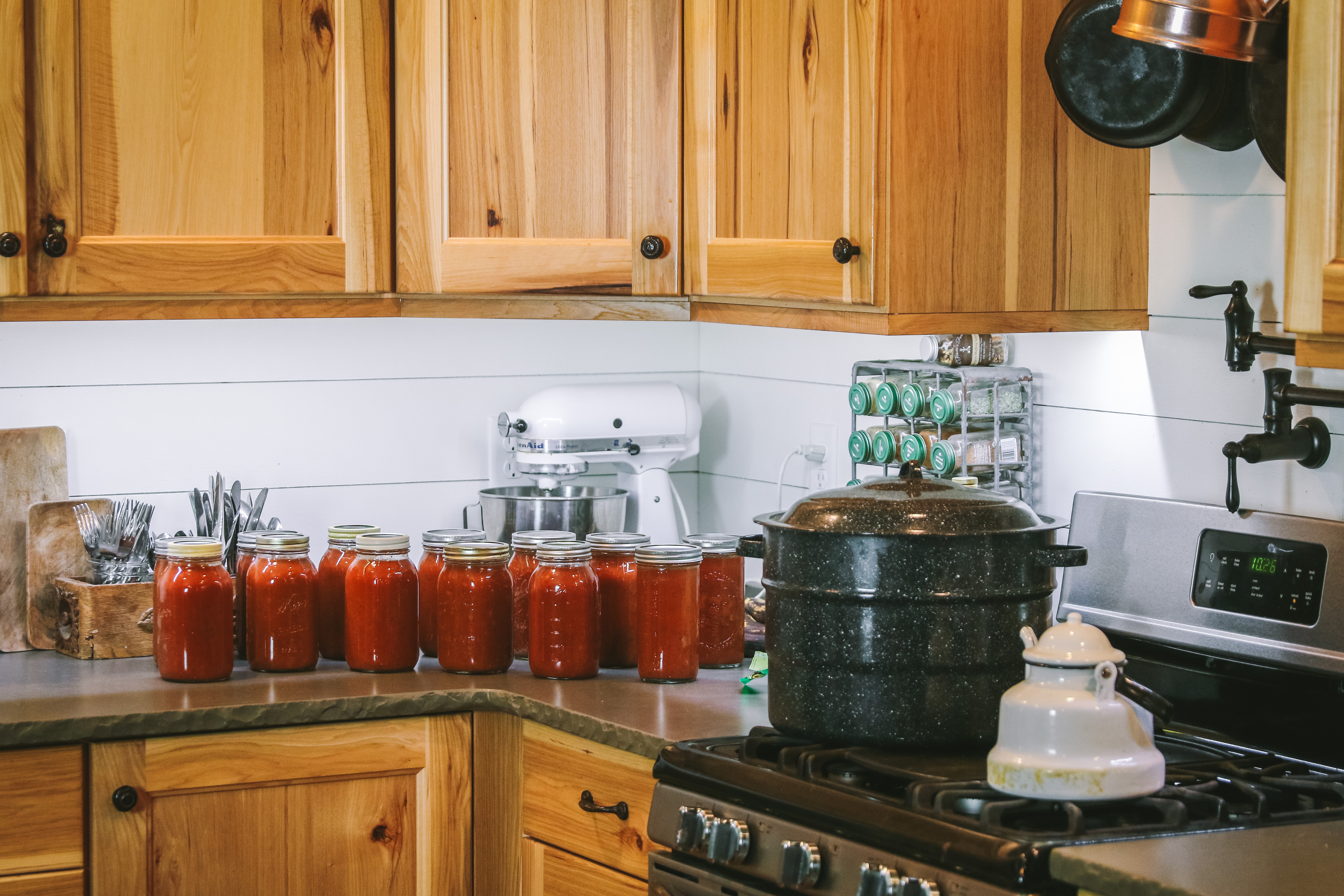Oh Tomatoes… You tricky, tricky things.
You wouldn’t think home canned tomatoes would be earth-shattering topic, would you?
Well, you’d be surprised.
I’ve seen some pretty heated discussions in regards to how to can tomatoes safely at home. Whenever the conversation comes up in my Homestead & Heritage Cooking Facebook group, there are always members who pull out their tried-and-true recipes from their grandma’s day– because if it worked for her, it should work for me too, right?!
But that’s where it gets tricky.
Many older tomato canning recipes call for using simple water bath canning as the processing method. This is because tomatoes are indeed a fruit and most fruits are perfectly suited to water bath canning due to their high levels of acidity.
However, things change.
Science has learned a thing or two in the past fifty years and it turns out that the canning authorities (like the USDA and the National Center for Home Food Preservation) have realized that tomatoes aren’t always as acidic as grandma originally thought.
Therefore, more modern recommendations call for pressure canners to be using when canning tomatoes. (By the way, this is the pressure canner I use– It may look like an alien space ship, but I love it). Naturally, that causes some confusion from people who have canned tomatoes with their trusty water bath canner for decades.
So when it comes to canning tomatoes, which method is right?
The short answer? Both water bath canning and pressure canning are perfectly acceptable for canning tomatoes safely, BUT no matter which option you choose, you MUST add some sort of acid.

How to Can Tomatoes Safely at Home
Any food with a pH of 4.6 or less can be safely water bath canned.
However, any food with a pH higher than 4.6 must be pressure canned.
Come to find out, tomatoes hover right around 4.6 pH, but they aren’t always consistent, either.
There are hundreds of varieties of tomatoes. In fact, according to the FDA, there are approximately 7,500 varieties of tomatoes. And all these different varieties of tomatoes have varying pH levels, some of which fall well above 4.6.
And while there are some myths floating around claiming it’s only newer strains of tomatoes that are lower in acid, that’s actually not true. There are heirloom varieties that are lower in acid as well. Additionally, some well-meaning folks might tell you that you can tell by the taste of the tomatoes if they’re acidic. Unfortunately, that’s never gonna be legit either. The truth is, many varieties of tomatoes don’t taste acidic simply because they have higher sugar levels that mask the taste.
There are also several conditions that can further reduce the acidity of tomatoes, including:
- Decaying tomatoes
- Over-ripening
- Developing blossom end rot
- Bruising
- Growing tomatoes in the shade
- Ripening off the vine
- And the list goes on…
Basically, there are a whole lot of variables to consider. Why should you care? Well, for one thing, canning tomatoes improperly increases your risk for botulism, which is a HUGE deal. (Learn how to safely can here!). Water bath canning low-acid foods is an invitation for botulism. And when you don’t know the exact acid content, things get sketchy.
Thankfully, there’s a magic weapon so you do NOT have to worry about this!
Good ol’ lemon juice.
That’s it. No matter what one of the 7,500 varieties of tomatoes you happen to be canning. No matter if you want to can them crushed, whole, diced, or as tomato sauce, all you have to do is add some type of acid and you’re all set. It’s that easy. You’re welcome. 

Other Acidification Options for Canning Tomatoes Safely
Lemon juice is my favorite acid option for canning tomatoes, but it’s not the only one!
You actually have 3 options when it comes to acids for safely canning tomatoes:
-
Lemon juice (store-bought)
-
Citric acid
-
Vinegar (store-bought)
Lemon Juice
I like to use bottled organic lemon juice, but you can use any bottled option you’d like. However, do not use home-squeezed lemon juice as bottled lemon juice has a known and consistent pH level. Fresh lemons produce lemon juice that has not been tested for acidity, which defeats the purpose of adding it in the first place. Just like the growing conditions for tomatoes that I mentioned above, the lemons’ growing conditions will change their pH levels.
When canning tomatoes, use the following ratios of lemon juice to lower the pH to safe levels for water bath canning:
- 1 tablespoon bottled lemon juice (5% concentration) per pint of tomatoes
- 2 tablespoons bottled lemon juice (5% concentration) per quart of tomatoes
Citric Acid
You can also buy plain citric acid. You can purchase this natural, granulated citric acid and add it to canned tomatoes to raise their acidity level. It’s great to use in recipes where you need a higher pH but you don’t want to add the stronger flavors of vinegar or lemon juice to the finished product.
When canning tomatoes, use the following ratios of citric acid to lower the pH to safe levels for water bath canning:
- ¼ teaspoon citric acid per pint of tomatoes
- ½ teaspoon citric acid per quart of tomatoes
Vinegar
Vinegar is another option, but I don’t recommend it for canned tomatoes. Because, well, you know how vinegar tastes, right? If you do wind up using vinegar for canning tomatoes, select one with at least 5% acidity. Sometimes particular recipes will call for a certain type of vinegar, like apple cider or white. You can safely swap out vinegars, as long as the one you’re swapping in has an acidity level of at least 5%.
When canning tomatoes, use the following ratios of vinegar to lower the pH to safe levels for water bath canning:
- 2 tablespoons vinegar (5% acidity) per pint of tomatoes
- 4 tablespoons vinegar (5% acidity) per quart of tomatoes

Do You Need to Add Acidification for BOTH Water Bath Canning and Pressure Canning?
Whatever type of canning process you decide to use, it is recommended that you add the additional acid in order to can tomatoes safely. Many recipes for pressure canning tomatoes use shorter processing times because the recipes assume that the tomatoes have the correct levels of acid.
You Got This!
I know all this talk of pH levels, 5% acids, and tomato varieties can be confusing at first glance, but don’t let any of it intimidate you! Canned tomatoes should absolutely be a staple in your pantry. All you have to do is remember to add an acid and you’ll be set. Not only is canning tomatoes easy, there’s just nothing like grabbing a jar of summertime from your pantry in the dead of winter.
Looking for a good source for your tomato seeds for next year’s garden? Here are some suggestions, and I recently discovered a great selection of heirloom tomato seeds here as well.
So go ahead. Dice or chop or puree some plump garden freshness. In February, your pasta or soup–and your family–will thank you.
Still nervous about canning? Check out my Canning Guide here!

Want to Know all the Canning Products I Use and Love?
Did you know I have an on-line mercantile of sorts? I link to some of my favorite kitchen tools for food preservation over there. But that barely scratches the surface…
 When I first started out canning, I would have loved for someone more experienced to invite me into her kitchen and show me the pans and jars and equipment she used to make all that magic that was stored up in her pantry. I do exactly that in this downloadable printable. Totally my little gift to you, so just click here and meet my favorite canning products up close and personal.
When I first started out canning, I would have loved for someone more experienced to invite me into her kitchen and show me the pans and jars and equipment she used to make all that magic that was stored up in her pantry. I do exactly that in this downloadable printable. Totally my little gift to you, so just click here and meet my favorite canning products up close and personal.
More Ways to Preserve Tomatoes:
- How to Freeze Tomatoes
- 40+ Ways to Preserve Tomatoes
- 15 Minute Tomato Sauce Recipe
- How to Make Sun-Dried Tomatoes
- Homemade Pico de Gallo Salsa
The post How to Can Tomatoes Safely at Home appeared first on The Prairie Homestead.
Via Gardening http://www.rssmix.com/
No comments:
Post a Comment